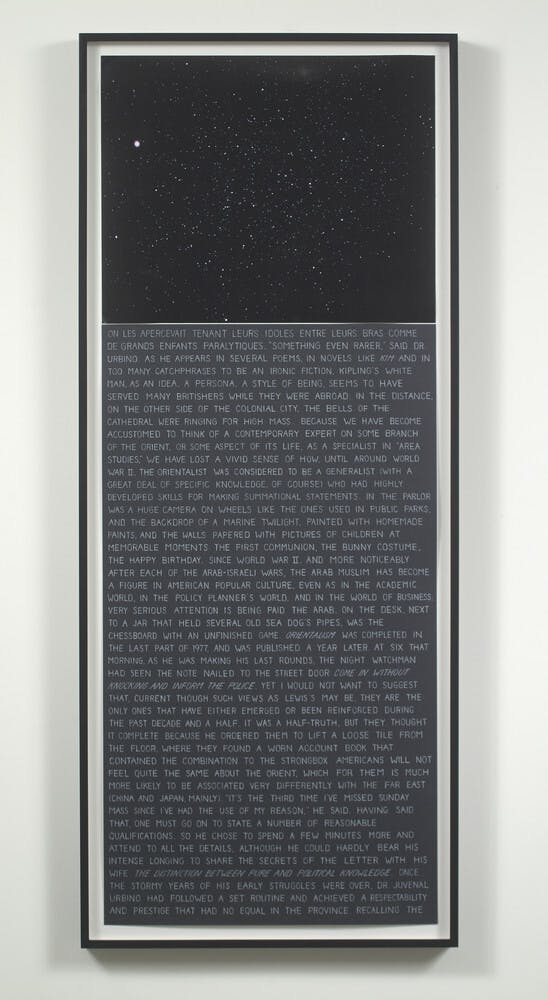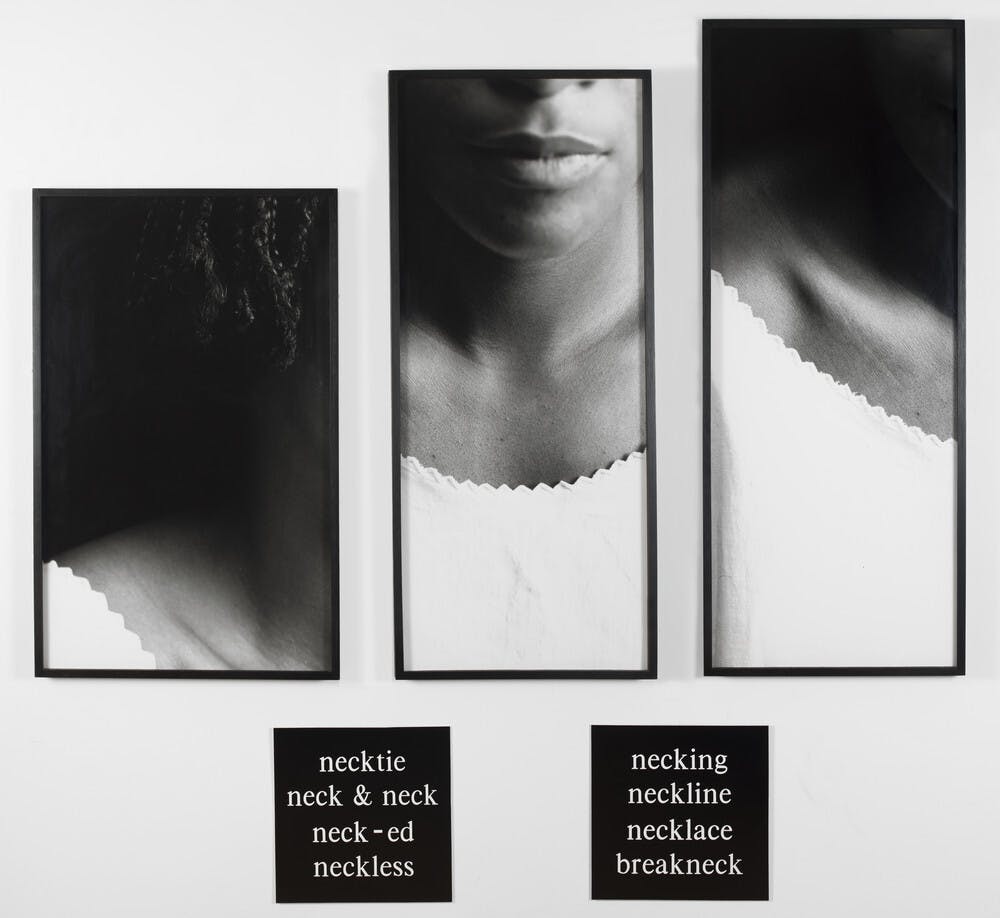Text-Based
Text-based artworks describe works of art that heavily feature the written word and characters. This collection of works uses text as material—to explore form, add meaning, or reference other written sources.
As seen in these works, artists incorporate text for a variety of purposes. While some mine the conceptual or graphic possibilities of language, others are more direct and wield language as a further extension of asserting their visual expression.
Text-Based was organized by Kiki Teshome, Curatorial Assistant.
Barbara Jones-Hogu combines bold, graphic text and Afrocentric imagery
Jones-Hogu plays with geometric forms inspired by African visual aesthetics: interior shapes are filled in with color on one side and left blank on the other, words resist standard alignment and follow rounded edges, and letters transform into other symbols.
Ellen Gallagher’s DeLuxe (2004–05) features a series of prints that recreate and modify advertisements for beauty products from Black magazines of the mid-twentieth century. By collaging different images, her own illustrations, and decorative elements, Gallagher recomposes print media.
In Randomized Text Drawing #2 (2006), Gaines places an image of the night sky above phrases of text. The phrases are randomly sequenced sentences from Gabriel García Márquez’s Love in the Time of Cholera and Edward Said’s Orientalism. The resulting paragraph complicates the expectation that image captions supply meaning.
Here, tear sheets from the literary magazine of the same name are in a grid.
The pages are covered in dense rectangles of charcoal ink, used by Bethany Collins to redact passages except for moments in which Black cultural figures and allied patrons are mentioned. The remaining visible lines of text are sparse, making the exclusion of Black voices more prominent.
Lorna Simpson pairs three black-and-white images displaying different perspectives of a woman’s neck above two columns of text listing words that include “neck.” The words direct the viewers’ attention to the subject’s body and intentionally demonstrates the tension between symbol and signifier.
In this work, Glenn Ligon references a lecture given by Muhammad Ali.
When asked by a student to give the audience a poem, Ali responded succinctly with the words “Me We.” Ligon is best known for his practice of citing literary references and exploring their presentation in black-and-white across painting, drawing, sculpture, and installation.
As seen in these works, artists incorporate text for a variety of purposes. While some mine the conceptual or graphic possibilities of language, others are more direct and wield language as a further extension of asserting their visual expression.
Text-Based was organized by Kiki Teshome, Curatorial Assistant.





